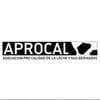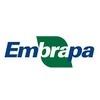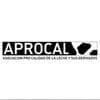
Alimentación convencional vs alimentación intensificada

- Lograr una mortandad por debajo el 3%
- Duplicar el peso al nacer




Azevedo, R. A., F. S. Machado, M. M. Campos, P. M. Furini, S. R. A. Rufino, L. G. R. Pereira, T. R. Tomich, y S. G.Coelho. (2016). The effects of increasing amounts of milk replacer powder added to whole milk on feed intake and performance in dairy heifers. J. Dairy Sci. 99:8018–8027.
Bach, A., M. Terré, y A. Pinto.(2013). Performance and health re- sponses of dairy calves offered different milk replacer allowances. J. Dairy Sci. 96:7790–7797.
Ballou, M. A. (2012). Immune responses of Holstein and Jersey calves during the preweaning and immediate postweaned periods when fed varying planes of milk replacer. J. Dairy Sci.95:7319–7330.
Ballou, M. A., D. L. Hanson, C. J. Cobb, B. S. Obeidat, M. D. Sell- ers, A. R. Pepper-Yowell, J. A. Carrol, T. J. Earleywine, y S. D. Lawhon. (2015). Plane of nutrition influences the performance, innate leukocyte responses, and resistance to an oral Salmonella enterica serotype Typhimurium challenge in Jersey calves. J. Dairy Sci. 98:1972–1982.
Davis, C.L. y J, K. Drackley. (2001). The development, nutrition, and management of the young calf. Iowa State University Press, Ames, Iowa 50014. DCHA (Dairy Calf and Heifer Association). 2016. Gold Standards I. Production and performance standards established for Holstein calves, from birth to 6 months of age across the United States. Accessed:
Aug17, 2019. http://calfandheifer.org/gold_standards/index.php
Drackley, J.K. (2008). Calf nutrition from birth to breeding. Vet. Clin. North Am. Food Anim. Pract. 24:55–86.
Galarza, R. y Catracchia C. (2014). ¡Que vivan los terneros! Manual de crianza. INTA E.E.A Rafaela. Glosson, K. M., B. A. Hopkins, S. P. Washburn, S. Davidson, G. Smith, T. Earleywine, y C. Ma. (2015). Effect of supplementing pasteurized milk balancer products to heat-treated whole milk on the growth and health of dairy calves. J. Dairy Sci. 98:1127–1135.
Godden, S. (2008). Colostrum Management for Dairy Calves. Vet Clin Food Anim 24: 19–39.Gregoret R.(2010). El bienestar animal en hembras no paridas. 1° Simposio Regional de Bienestar Animal PROLECHE 15 a 17 de septiembre de 2010. Uruguay.
Hill, T. M.,H. G. Bateman, J. M. Aldrich, y R. L. Schlotterbeck. (2009). Optimizing nutrient ratios in milk replacers for calves less than five weeks of age. J.Dairy Sci. 92:3281–3291. Khan, M. A.,H. J. Lee, W. S. Lee, H.
- Kim, K. S. Ki, T. Y. Hur, G. H. Suh, S. J. Kang, y Y. J. Choi. (2007). Structural growth, rumen development, and metabolic and immune responses of Holstein male calves fed milk through step-down and conventionalmethods. J. Dairy Sci. 90:3376–3387
Khan, M. A.,D. M. Weary, y M. A. G. von Keyserlingk. (2011). Invited review: effects of milk ration on solid feed intake, weaning, and performance in dairy heifers. J.Dairy Sci. 94:1071–1081.
Kiezebrink, D.J., A. M. Edwards, T. C. Wright, J. P. Cant, y V. R. Osborne. (2015). Effect ofenhanced whole-milk feeding in calves on subsequent first-lactation performance.J. Dairy Sci. 98:349–356.
Silper, B. F., A. M. Q. Lana, A. U.Carvalho, C. S. Ferreira, A. P. S. Franzoni, J. A. M. Lima, H. M. Saturnino, R. B. Reis, y S. G.Coelho. 2014. Effects of milk replacer feeding strategies on performance, ruminal development, and metabolism of dairy calves.J.Dairy Sci. 97:1016–1025.
Soberon, F., E. Raffrenato, R. W.Everett, y M. E. Van Amburgh. (2012). Preweaning milk replacerintake and effects on long-term productivity of dairy calves. J. Dairy Sci.95:783–793.
Terré, M., C. Tejero, y A. Bach. (2009). Long-term effects on heifer performance of anenhanced-growth feeding programe applied during the preweaning period. J. Dairy Res. 76:331–9.

Aprecio su comentario y coincido plenamente en que el manejo es el factor que finalmente determina si las buenas prácticas de nutrición, genética y sanidad se traducen en resultados concretos.
La metáfora del embudo es muy clara: sin una correcta ejecución, incluso los mejores programas pueden fracasar. Y justamente, ahí es donde la nutrición temprana debe integrarse al manejo global de la granja para generar un efecto duradero.
Mi intención en la nota fue mostrar que, si bien la nutrición temprana tiene un impacto real, este no debe interpretarse como una “varita mágica” que resuelva por sí sola la producción futura. Coincido con usted: no se trata de ilusiones, sino de ejecutar correctamente todos los aspectos, manejo incluido, para que la ciencia aplicada se refleje en productividad.
Gracias por sumar su experiencia al debate, porque enriquece la discusión con un punto clave que a veces se subestima.
Saludos cordiales,
Alvaro García DVM PhD
Dellait Animal Nutrition and Health
Las magias, pueden ser entretenidas y hasta sorprendentes; respeto y valoro a los ilusionistas, pero cuando actúan en el teatro, cine, circos; es una forma digna de ganar el sustento familiar.
En nuestro caso, no podemos ilusionar a los animales, no saben mentir y nos lo hacen saber de inmediato.
Concuerdo con el concepto de un programa de alimentación bien completo, es así y los hechos lo demuestran. Pero eso sí, cuando se ejecutan correctamente.
Por eso, no es que quiera buscarle la quinta pata a la mesa, pero además de los cuatro puntos que bien describe, le agregaría el Manejo. Porque es, como lo comento habitualmente, la punta del embudo. Toda la ciencia, los conocimientos, las teorías se vuelcan en un embudo, pero si la punta del embudo está tapada, todo lo que se puso en él, no sirve, porque no llega de la forma adecuada al animal.
Hago mucho énfasis en este tema, MANEJO, porque lo he visto y comprobado, en las distintas especies, en todos los países que me tocó trabajar.
Los errores o desviaciones en el manejo de un plan de trabajo son las causales de importantes pérdidas económicas para la empresa.
Cordiales saludos.
Horacio Gerde

Estoy de acuerdo con los parámetros de la crianza artificial de terneros con objetivos de duplicar el peso al nacer antes del destete y mantener la mortandad por debajo del 3%. El plan convencional de alimentación, aproximadamente 4 L/día de leche, no cubre los requerimientos para alcanzar ganancias de ˜700 g/día, necesarias para cumplir esta meta. Sobretodo con la genética Holstein moderna.
En contraste, los planes intensificados ofrecen volúmenes mayores de leche o sustituto lácteo (con concentraciones de sólidos del 18–20% MS) en las primeras semanas de vida. No solo la concentración de solidos es importante sino manejar niveles de proteína arriba del 20% (22%) como se ha demostrado en varios ensayos. Esto permite:
Alcanzar ganancias diarias de 700–800 g, incluso superiores en algunos casos.
Aumentar el peso al destete en 8–12 kg frente al sistema convencional.
Mejorar la eficiencia de conversión de nutrientes en crecimiento.
Favorecer un mayor desarrollo inmunitario, reduciendo la incidencia de enfermedades posdestete.
Diversos estudios respaldan que un inicio nutricional sólido no solo influye en la salud y el desarrollo temprano, sino que también repercute positivamente en la producción de leche en las primeras lactancias y en la longevidad productiva de la vaca.
En conclusión la alimentación intensificada en la crianza de terneros es una estrategia que combina mejores indicadores productivos y sanitarios con un impacto positivo a largo plazo sobre el potencial productivo y la rentabilidad del sistema lechero.

Hay algunos metanálisis que muestran que los mayores volúmenes de leche o sustituto de leche que se administran a los terneros son responsables solo del 3 % del aumento de la producción de leche durante la primera lactancia de las terneras alimentadas para acelerar su crecimiento durante la fase de crecimiento alimentadas con leche. Además, si esas terneras jóvenes producen más leche en su primera lactancia, el intervalo entre partos aumenta y la segunda lactancia o las futuras no muestran ninguna ventaja en cuanto al rendimiento. El volumen de leche o sustituto que se les da a comer en las primeras etapas de su vida no cubre el aumento de la producción de leche durante su primera lactancia. No hay que olvidar que el aumento de la producción de leche tiene un coste. Los ganaderos no obtienen toda la ventaja del precio de la leche extra, sino solo el porcentaje de beneficio que realmente les corresponde y no el precio total obtenido por la leche entregada. Cuanto mayor sea el volumen alimentado en las primeras etapas de la vida, menor será la ingesta de pienso de inicio, lo que permitirá un destete más seguro. El destete gradual para prolongar la fase de alimentación con leche con volúmenes más altos traerá complicaciones adicionales para la gestión de la granja de diferentes grupos de edad de terneros.
Si lee atentamente el siguiente metanálisis publicado por Heinrichs y Gelsinger, verá que todos los resultados publicados son económicamente desastrosos.
https://www.jdscommun.org/issue/S2666-9102(24)X0005-8?utm_source=ADSA&utm_medium=banner&utm_campaign=JDSC_BehaviorSI#ProductionHealthWelfareandBehavior55.
Ellos llegaron a la siguiente conclusión:
Concluimos que las ganancias en la producción de la primera lactancia logradas al aumentar el ADG de los terneros antes del destete son pequeñas y representan menos del 3 % de la variación en la producción de leche de la primera lactancia. La genética, la salud y otras prácticas de gestión de las explotaciones representan el 97 % de la producción real de leche que observamos. Además, cualquier mejora del GAD que queramos lograr en los terneros antes del destete es mucho más barata de conseguir aumentando la ingesta de pienso de inicio para terneros en combinación con un programa razonable de leche/sustituto de leche.
Los resultados económicos de los experimentos publicados mostraron que, para los resultados publicados, el valor adicional de la leche menos el aumento de los costes de alimentación son negativos.
Es muy importante para el ganadero saber criar los remplazos de su futuras vacas productoras. Un











